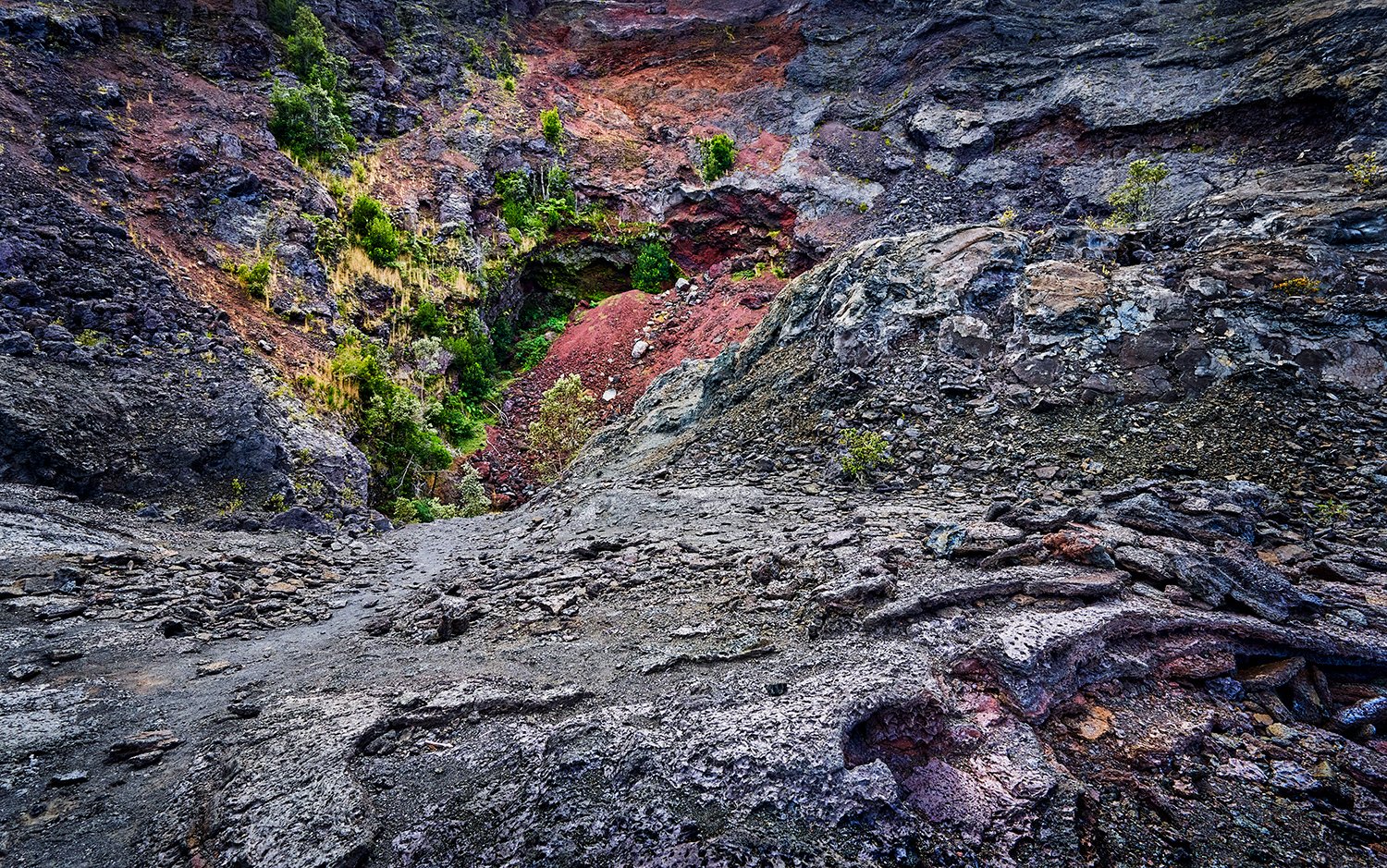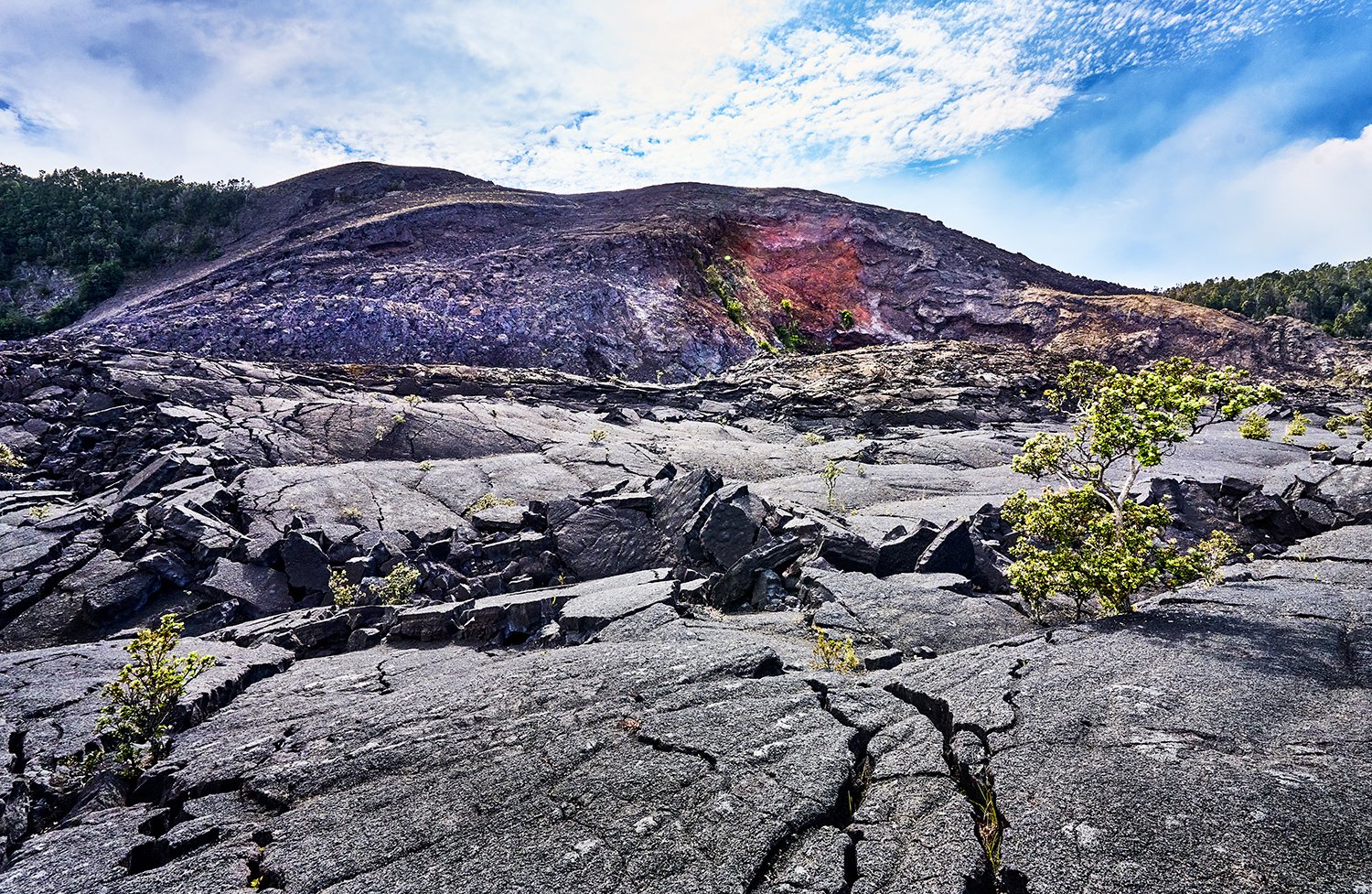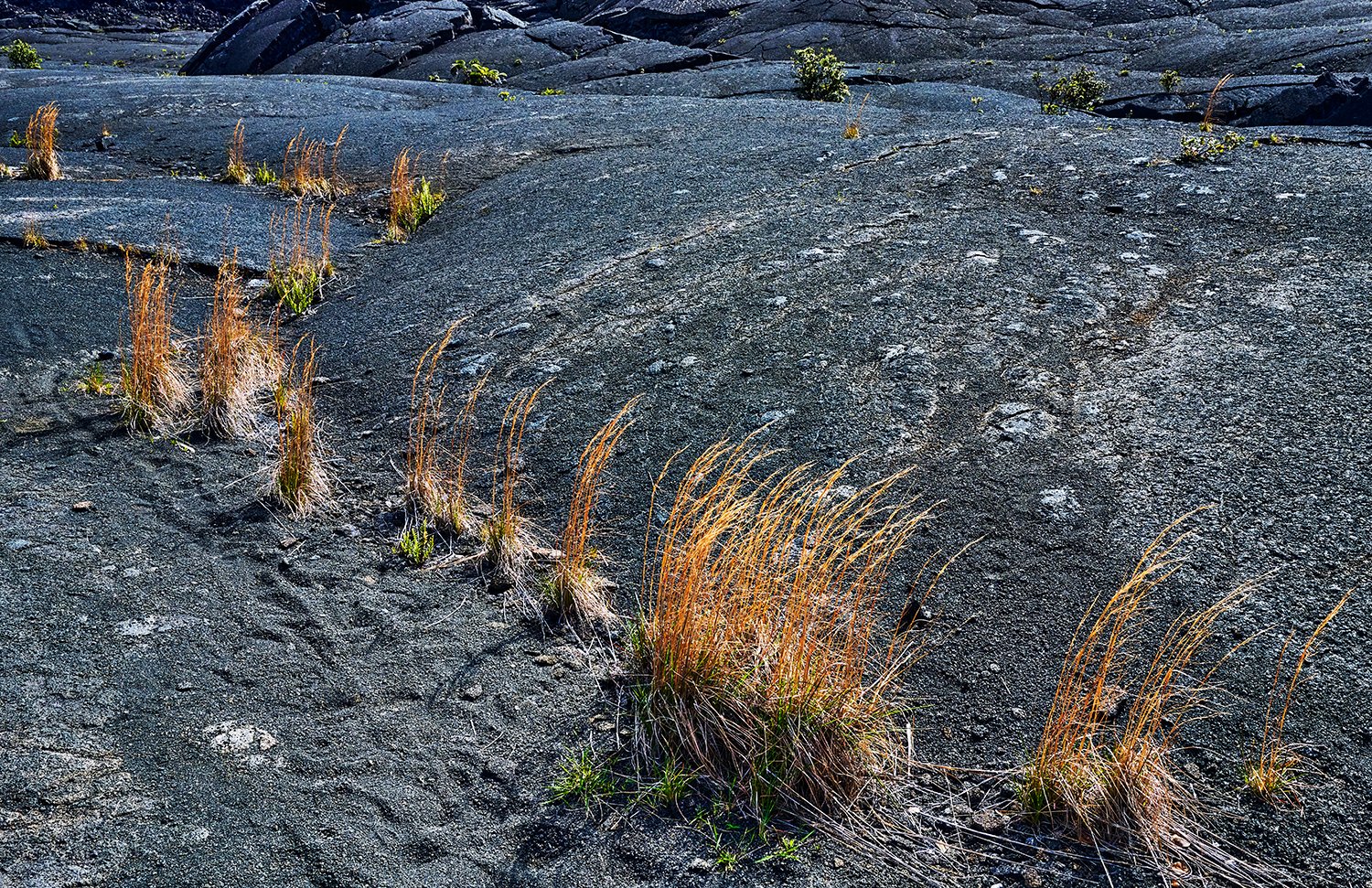In the Kilauea Iki Crater
Kiilauea Iki, a volcanic vent near the main caldera of Kilauea on the Big Island of Hawaii, last erupted about 63 years ago in 1959 in what was described as one of the most spectacular eruptions of the 20th century, spewing lava plumes over 1000 feet into the air. As the eruption stopped and the magma chamber shrunk, the lava lake in the crater sank 400 feet and cooled and cracked into its present location, now accessible to hikers who can view the remnant of the eruption and the return of vegetation and animal life to the volcanic landscape.
The following images are from the trail leading to the vent dome of Kilauea-Iki Crater, adjacent to the Kilauea Crater shown above
Eruption vent of Kilauea Iki at the cinder cone in the crater
Start of the trail through the cooled lava lake
Lava flow just below the eruption vent
Hikers are dwarfed by the lava fracture plates and the 400 foot walls of the crater
Grasses emerging between lava plates as the vegetation emerges in the crater floor
Lava plates as trail enters the crater floor
Apapane in forest climbing out of crater








